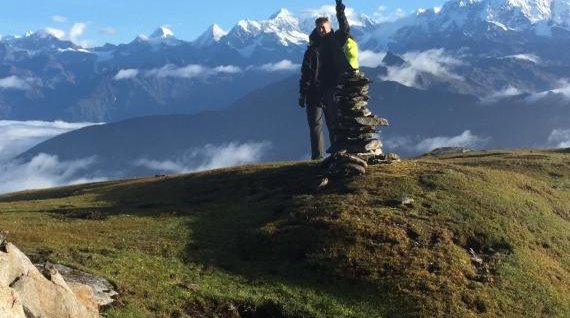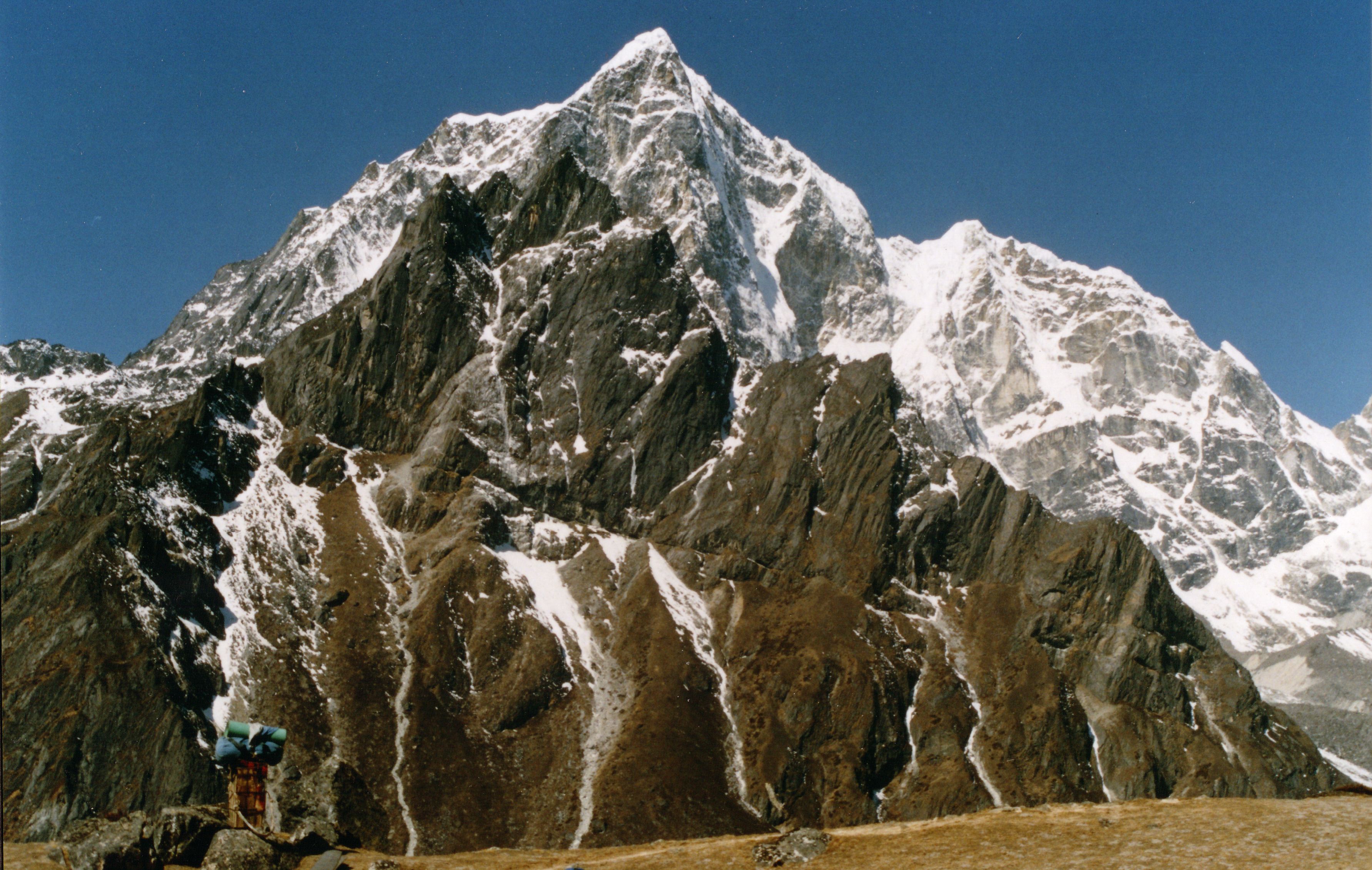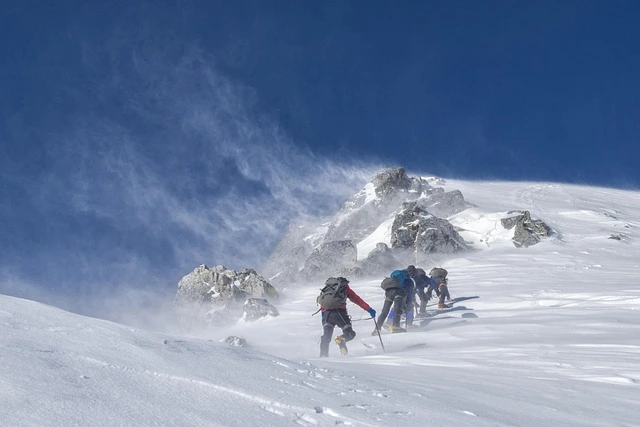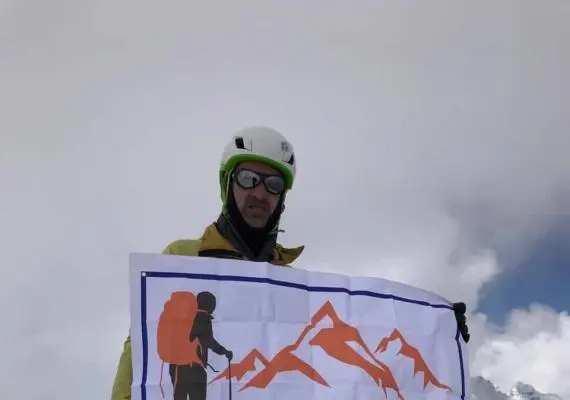While thousands crowd the Everest Base Camp trail each season, savvy trekkers are discovering what Sir Edmund Hillary called his favorite viewpoint in all of Nepal - the magnificent Pikey Peak Trek. Located in the Solukhumbu district lower Everest region, this hidden gem offers something extraordinary that even EBC cannot match - a complete Mount Everest panoramic view without the extreme altitude challenges.
- Edmund Hillary's favorite viewpoint - personally endorsed as the best Everest vista in Nepal
- Uncrowded trails with authentic Sherpa cultural experiences unlike commercialized EBC routes
- Perfect moderate difficulty grade suitable for first-time Himalayan trekkers
- Budget-friendly alternative saving 60-70% compared to Everest Base Camp costs
Pikey Peak Overview: Essential Facts & Location
Standing at Pikey Peak elevation 4065m, this spectacular viewpoint sits strategically in Koshi Province Nepal, offering one of the most accessible high-altitude experiences in the Himalayas. The trek combines achievable altitude with breathtaking rewards, making it an ideal choice for trekkers seeking Himalayan glory without extreme physical demands. Unlike its famous neighbors requiring weeks of acclimatization, the Pikey Peak Trek delivers world-class mountain views in just 5-7 days.
- Elevation: 4,065 meters (13,336 feet) - lower than EBC but with superior views
- Location: Solukhumbu District, Koshi Province, Eastern Nepal
- Trek Duration: 5-7 days depending on chosen itinerary
- Difficulty Level: Moderate - suitable for reasonably fit beginners
- Best Features: 360-degree Himalayan panorama including 8 eight-thousanders
- Starting Point: Dhap village (accessible by road) or Phaplu (by flight)
Pikey Peak Trek Cost 2025: Complete Budget Breakdown
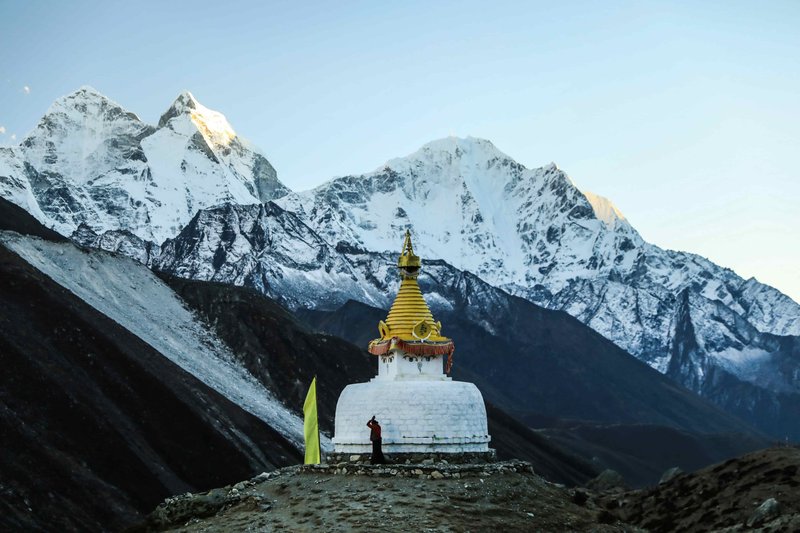
Understanding the Pikey Peak Trek cost is crucial for planning your adventure, and we're committed to complete transparency about pricing. The total Pikey Peak Trek price varies significantly based on your choices, but expect to budget between $400-$1,200 per person for the complete experience. The Pikey Peak Trek price in NPR ranges from NPR 52,000 to NPR 156,000, depending on your travel style and group size.
Budget Breakdown by Category:
Basic Package (Budget Travelers): $400-600 / NPR 52,000-78,000
- Permits and documentation: $30 / NPR 3,900
- Local guide (shared): $15-20 per day / NPR 1,950-2,600 daily
- Teahouse accommodation: $5-8 per night / NPR 650-1,040 nightly
- Meals (dal bhat focused): $15-20 per day / NPR 1,950-2,600 daily
- Transportation (local bus): $30-40 / NPR 3,900-5,200
Standard Package (Most Popular): $700-900 / NPR 91,000-117,000
- All permits and fees: $30 / NPR 3,900
- Professional licensed guide: $25-30 per day / NPR 3,250-3,900 daily
- Porter service: $15-20 per day / NPR 1,950-2,600 daily
- Quality teahouse rooms: $10-15 per night / NPR 1,300-1,950 nightly
- Full board meals with variety: $25-30 per day / NPR 3,250-3,900 daily
- Private jeep transportation: $150-200 / NPR 19,500-26,000
Premium Package (Comfort Seekers): $1,000-1,200 / NPR 130,000-156,000
- All permits with expedited processing: $30 / NPR 3,900
- Senior guide with 10+ years experience: $40-50 per day / NPR 5,200-6,500 daily
- Personal porter (carries 15kg): $20-25 per day / NPR 2,600-3,250 daily
- Best available lodges: $15-25 per night / NPR 1,950-3,250 nightly
- Premium meal options: $35-40 per day / NPR 4,550-5,200 daily
- Phaplu flight option: $150 one-way / NPR 19,500
Hidden Costs to Consider:
The actual Pikey Peak Trek cost often includes expenses that agencies don't mention upfront. Budget an additional $100-200 for these often-overlooked items:
- Hot showers in teahouses: $3-5 per shower / NPR 390-650
- Device charging: $2-3 per charge / NPR 260-390
- WiFi access: $3-5 per day / NPR 390-650
- Bottled water/purification tablets: $2-4 per day / NPR 260-520
- Snacks and treats: $5-10 per day / NPR 650-1,300
- Tips for guides/porters: 10-15% of their total fee
- Travel insurance (mandatory): $50-100 / NPR 6,500-13,000
Money-Saving Tips for Pikey Peak Trek:
Smart planning can reduce your Pikey Peak Trek price by 30-40% without compromising safety or experience:
- Travel in groups - split guide and transportation costs among 4-6 people
- Book directly with local agencies - save 20-30% compared to international operators
- Choose shoulder season - March and late November offer 15-20% discounts
- Bring your own snacks - trail prices are 3-4x higher than Kathmandu
- Carry water purification - save $50-80 on bottled water
- Negotiate package deals - combine multiple services for better rates
Stunning Views & Photography Opportunities
The Pikey Peak sunrise viewpoint delivers what many consider Nepal's finest mountain panorama, with the Pikey Peak sunrise illuminating eight of the world's fourteen eight-thousanders in golden alpenglow. The Pikey Peak views stretch from Dhaulagiri in the west to Kanchenjunga in the east, creating a 300-kilometer Himalayan amphitheater that leaves even seasoned mountaineers speechless.
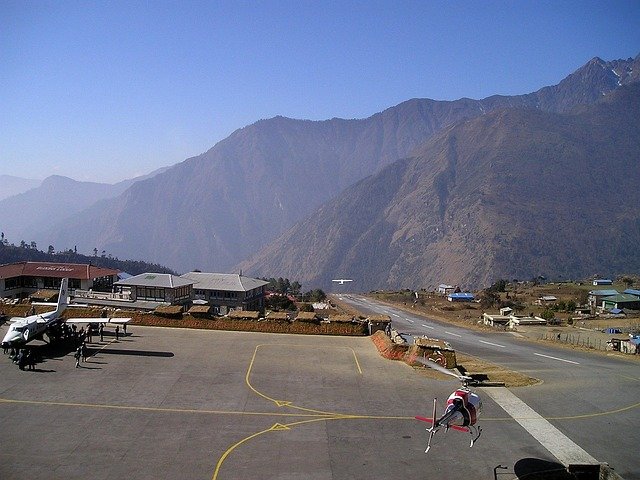
Premier Photography Locations:
- Main Summit (4,065m): The ultimate Pikey Peak sunrise viewpoint for panoramic shots
- Prayer Flag Ridge (4,000m): Colorful foreground elements with Everest backdrop
- Jhapre Village Overlook (2,900m): Traditional Sherpa homes with mountain vistas
- Rhododendron Forest Trail (3,200m): Stunning blooms framing snow peaks (March-April)
- Thupten Choling Approach (2,800m): Monastery architecture against Himalayan giants
Seasonal Photography Variations:
October-November: Crystal-clear mountain views with dramatic cloud formations make this the October November best season for photography. The post-monsoon clarity reveals details on peaks 200km away, while autumn light creates spectacular golden hours lasting 30-45 minutes.
March-April: The rhododendron forests spring blooms transform the landscape into a photographer's paradise. Massive rhododendron trees burst with red, pink, and white flowers, creating natural frames for mountain compositions.
December-February: Winter offers the clearest air quality and snow-dusted lower peaks, though extreme cold requires battery management strategies. Dawn temperatures at the summit can drop to -15°C, but the pristine conditions deliver magazine-quality images.
How to Reach Pikey Peak: Transportation Guide
Understanding how to reach Pikey Peak efficiently saves both time and money, with the Kathmandu to Pikey Peak journey offering multiple options. The Dhap starting point trailhead serves as the primary access point for most trekkers, though the Phaplu airport flight option provides a scenic alternative for those prioritizing comfort over cost.
Route Option 1: Kathmandu to Dhap (Most Popular)
The overland journey from Kathmandu to Pikey Peak via Dhap takes 8-10 hours but offers cultural immersion and acclimatization benefits:
- Local Bus: $15-20 / NPR 1,950-2,600 (departs 6 AM from Old Bus Park)
- Tourist Bus: $25-30 / NPR 3,250-3,900 (comfortable seats, scheduled stops)
- Private Jeep: $150-200 / NPR 19,500-26,000 (flexible timing, direct route)
- Shared Jeep: $30-40 / NPR 3,900-5,200 (good compromise option)
Journey Breakdown: Kathmandu → Bhaktapur → Dhulikhel → Ghurmi → Okhaldhunga → Dhap
Route Option 2: Flight to Phaplu
The Phaplu airport flight option reduces travel time to 35 minutes but requires additional trekking:
- Flight Cost: $150-170 one-way / NPR 19,500-22,100
- Airlines: Summit Air, Tara Air (weather dependent)
- Schedule: Usually one morning flight (weather permitting)
- Trek from Phaplu: Additional 1-day trek to join main route
Practical Transportation Tips:
Successfully navigating how to reach Pikey Peak requires understanding local logistics that guidebooks often miss:
- Book jeeps through hotels - save 20-30% vs tourist agencies
- Start early - leave Kathmandu by 6 AM to reach Dhap before dark
- Pack lunch - limited food options on the road journey
- Carry NPR cash - no ATMs beyond Okhaldhunga
- Consider motion sickness - winding mountain roads for 6+ hours
- Confirm vehicle type - ensure 4WD for final section to Dhap
Trek Difficulty Assessment: Who Can Do This Trek?
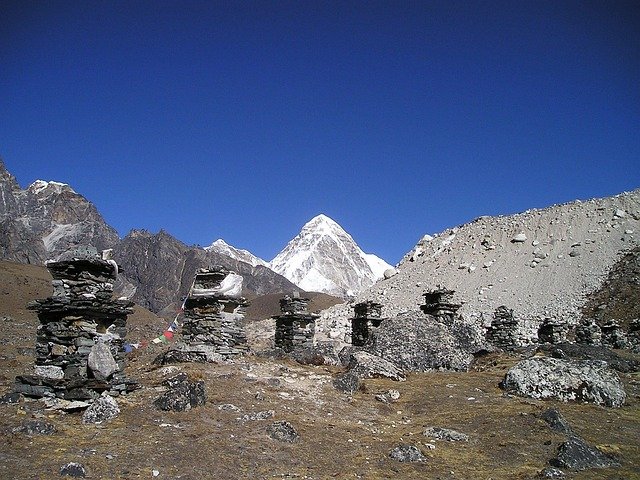
The Pikey Peak Trek difficulty sits perfectly in the moderate category, making it accessible to a wide range of adventurers including those seeking Pikey Peak Trek for beginners options. Understanding the true Pikey Peak Trek difficulty helps set realistic expectations and ensures proper preparation for this achievable Himalayan adventure.
Physical Fitness Requirements:
The moderate difficulty grade means you don't need to be an athlete, but basic fitness is essential:
- Cardiovascular endurance: Ability to walk 5-6 hours daily at steady pace
- Leg strength: Comfortable with stairs/hills in daily life
- Previous experience: Helpful but not mandatory - many complete this as first trek
- Age range: Successfully completed by trekkers aged 12 to 75
- Training recommendation: 3-4 months of regular hiking/walking before departure
Daily Challenge Breakdown:
Understanding daily Pikey Peak Trek difficulty variations helps mental preparation:
Day 1-2: Gentle introduction with 4-5 hours walking on good trails Day 3: Moderate challenge with 6 hours and 800m elevation gain Day 4: Summit day - early start but only 2-3 hours to peak Day 5: Long descent requiring knee strength and trekking poles
Altitude Considerations:
The Pikey Peak elevation of 4,065m presents manageable altitude challenges:
- Acclimatization built-in: Gradual ascent profile minimizes altitude sickness risk
- Lower than EBC: 1,300m lower means significantly easier breathing
- Success rate: 95%+ of trekkers reach summit without altitude issues
- Safety margin: Can descend quickly if symptoms develop
- Medical facilities: Basic health posts available in larger villages
Who Thrives on This Trek:
The Pikey Peak Trek for beginners particularly suits:
- First-time Himalayan trekkers seeking manageable introduction
- Families with teenagers wanting shared adventure experience
- Active seniors maintaining fitness through regular hiking
- Time-limited travelers unable to commit to longer treks
- Budget-conscious adventurers seeking value without compromise
Best Time to Trek Pikey Peak: Seasonal Guide
Choosing the Pikey Peak best time dramatically impacts your experience, with Pikey Peak weather patterns creating distinct seasonal advantages. While the October November best season attracts most trekkers for good reason, understanding all seasonal variations helps optimize your Pikey Peak Trek timing.
Autumn Season (October-November): The Premium Window
The October November best season delivers near-perfect conditions making it the most popular Pikey Peak best time:
- Weather stability: 80% clear days with minimal precipitation
- Temperature range: Comfortable 10-15°C days, manageable -5°C nights at altitude
- Visibility: Post-monsoon clarity reveals peaks 200km distant
- Crowds: Moderate traffic but nothing like EBC congestion
- Booking impact: Reserve accommodations 2-3 weeks ahead
- Cost factor: Peak season rates apply but still 60% cheaper than EBC
Spring Season (March-May): The Rhododendron Spectacular
Spring ranks as the second-best Pikey Peak best time with unique attractions:
- Rhododendron forests spring blooms: Nepal's national flower in full glory
- Weather reliability: 70% clear days with occasional afternoon clouds
- Temperature comfort: Warmer than autumn with 12-18°C days
- Photography bonus: Flower foregrounds enhance mountain compositions
- Cultural timing: Coincides with local festivals and celebrations
- Price advantage: 10-15% lower than autumn rates
Winter Season (December-February): The Budget Explorer's Choice
Winter Pikey Peak weather challenges bring rewards for prepared trekkers:
- Visibility excellence: Clearest air quality of entire year
- Crowd-free trails: Near-complete solitude on most days
- Cost savings: 30-40% discounts on all services
- Snow beauty: Fresh snow enhances mountain drama
- Cold reality: Summit temperatures drop to -15°C requiring proper gear
- Shorter days: Limited daylight requires efficient trekking
Monsoon Season (June-September): The Cultural Immersion Option
While challenging, monsoon Pikey Peak weather offers unique experiences:
- Cultural authenticity: Witness real rural life without tourist influence
- Dramatic skies: Spectacular cloud formations and occasional mountain glimpses
- Lush landscapes: Valleys burst with green vegetation
- Wildlife activity: Increased bird and butterfly sightings
- Major challenges: Daily rain, leech presence, slippery trails
- View lottery: Clear mornings possible but unreliable
Duration Options: 5-Day vs 7-Day Itineraries
Choosing between Pikey Peak Trek 5 days and Pikey Peak Trek 7 days options significantly impacts your experience quality. The Pikey Peak Trek itinerary flexibility allows customization based on fitness, time constraints, and cultural interest depth.
Pikey Peak Trek 5 Days: The Efficient Explorer
The Pikey Peak Trek 5 days itinerary suits time-conscious trekkers prioritizing summit achievement:
Day 1: Kathmandu to Dhap (2,850m) - 8-hour drive
Day 2: Dhap to Jhapre (2,920m) - 5-hour trek through villages
Day 3: Jhapre to Pikey Base Camp (3,640m) - 6-hour gradual ascent
Day 4: Summit Pikey Peak (4,065m) and descend to Junbesi (2,700m) - 8 hours total
Day 5: Junbesi to Kathmandu via Phaplu - 9-hour journey
Advantages of 5-Day Itinerary:
- Minimal time commitment perfect for busy schedules
- Lower total cost with fewer accommodation nights
- Focused objective achieving summit efficiently
- Maintains moderate pace without feeling rushed
Considerations:
- Limited cultural interaction time
- Less flexibility for weather delays
- Longer daily walking hours
- Missing Thupten Choling Monastery
Pikey Peak Trek 7 Days: The Cultural Connoisseur
The Pikey Peak Trek 7 days itinerary provides deeper cultural immersion and comfortable pacing:
Day 1: Kathmandu to Dhap (2,850m) - scenic drive with photo stops
Day 2: Dhap to Sigane (2,960m) - 4-hour gentle introduction
Day 3: Sigane to Jhapre (2,920m) - 5 hours via Sherpa villages
Day 4: Jhapre to Pikey Base Camp (3,640m) - 5-hour forest trek
Day 5: Summit day and return to base camp - 5 hours round trip
Day 6: Base Camp to Junbesi via Thupten Choling (2,700m) - 6 hours
Day 7: Junbesi to Kathmandu - comfortable return journey
Advantages of 7-Day Itinerary:
- Relaxed pace with shorter daily distances
- Cultural depth including monastery visits and village interactions
- Weather buffer allowing flexibility for conditions
- Photography time for multiple sunrise attempts
- Acclimatization bonus reducing altitude concerns
Customization Options:
Your Pikey Peak Trek itinerary can be modified for specific interests:
Photography Focus: Add extra night at base camp for multiple sunrise shots
Cultural Extension: Include overnight at Thupten Choling Monastery
Comfort Upgrade: Fly Phaplu-Kathmandu saving final day's drive
Adventure Addition: Extend to Dudh Kunda lake (additional 4 days)
Cultural Highlights & Local Experiences
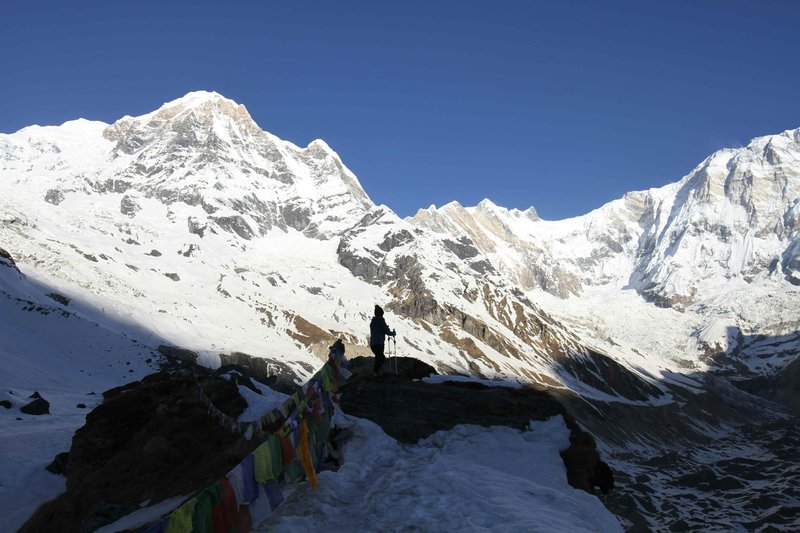
The Jhapre village Sherpa culture and Thupten Choling Monastery create cultural richness rivaling the mountain views. Experiencing authentic teahouse accommodation Pikey style provides intimate glimpses into mountain life unchanged for generations.
Sherpa Cultural Immersion:
The Jhapre village Sherpa culture offers authentic experiences increasingly rare on commercialized routes:
- Traditional architecture: Stone houses with carved wooden windows telling stories
- Morning rituals: Join locals for butter tea and tsampa breakfast
- Prayer wheel circuits: Participate in daily spiritual practices
- Yak herding culture: Witness seasonal movements and cheese production
- Traditional crafts: Observe weaving and woodcarving demonstrations
- Festival timing: Dumji and Mani Rimdu celebrations if timing aligns
Thupten Choling Monastery: Spiritual Heart
Thupten Choling Monastery stands as one of Nepal's most important Buddhist centers:
- Historical significance: Founded in 1960s by Tibetan refugees
- Active community: 300+ monks and nuns in residence
- Morning prayers: Attend 5 AM chanting sessions (permission required)
- Architecture marvel: Traditional Tibetan design with modern additions
- Cultural exchange: Opportunity for meaningful monk interactions
- Donation impact: Direct support for education and healthcare programs
Teahouse Accommodation Experience:
The teahouse accommodation Pikey experience defines Himalayan trekking charm:
- Family operations: Most lodges run by local families for generations
- Common areas: Evening gatherings around heating stoves sharing stories
- Local cuisine: Dal bhat power meals and regional specialties
- Simple comfort: Basic but clean rooms with thick blankets
- Cultural evenings: Spontaneous singing and dancing sessions
- Language exchange: Practice Nepali phrases with patient hosts
Permits & Documentation Required
Understanding Pikey Peak Trek permit requirements ensures smooth entry to protected areas. The Gaurishankar Conservation Area permit and other documentation must be arranged before starting your trek, though the process is straightforward compared to restricted area treks.
Essential Permits:
Gaurishankar Conservation Area Permit:
- Cost: NPR 2,000 ($15) for foreign nationals
- Validity: Single entry for trek duration
- Where to obtain: Nepal Tourism Board Kathmandu or Dhap checkpoint
- Required documents: Passport copy, 2 passport photos
- Processing time: 30 minutes at counter
Local Area Permit (Khumbu Pasang Lhamu Rural Municipality):
- Cost: NPR 2,000 ($15) for foreign nationals
- Purpose: Supporting local development projects
- Where to obtain: Dhap or Lukla entry points
- Validity: Duration of trek
- Agency handling: Usually included in organized treks
Documentation Checklist:
Proper documentation prevents Pikey Peak Trek permit delays:
- Valid passport: Minimum 6 months validity remaining
- Nepal visa: Tourist visa obtained on arrival or in advance
- Travel insurance: Mandatory coverage to 5,000m minimum
- Emergency contacts: Embassy details and insurance hotline
- Passport photos: Carry 6-8 copies for various permits
- Permit copies: Keep photocopies separate from originals
Agency vs Independent Processing:
Obtaining your Pikey Peak Trek permit through agencies offers advantages:
Agency Processing Benefits:
- Advance arrangement avoiding checkpoint queues
- Bundled pricing often cheaper than individual permits
- Expert knowledge of current requirements
- Time savings of 2-3 hours in Kathmandu
Independent Processing:
- Direct control over documentation
- Slight cost savings if very budget-conscious
- Flexibility in timing and route changes
- Educational experience understanding systems
Essential Gear & Packing Considerations
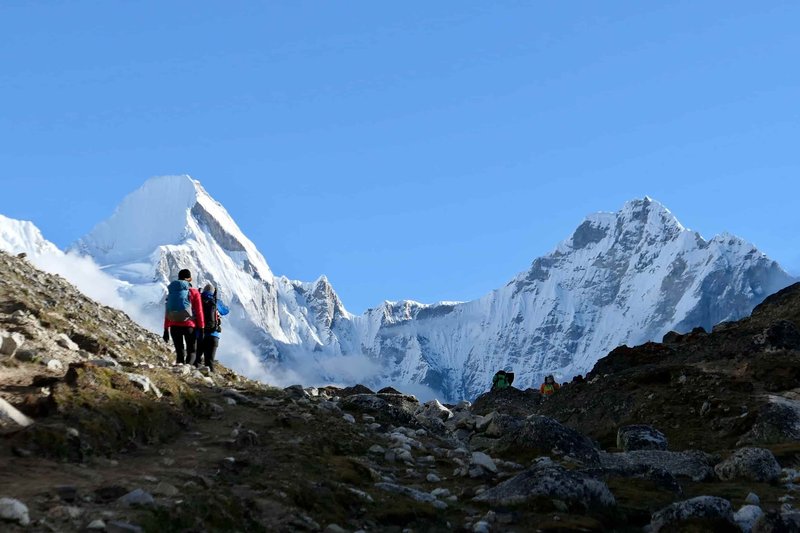
Your Pikey Peak packing list must account for the Pikey Peak elevation variations from 2,700m to 4,065m, with temperature swings of 25°C between day and night. Creating the perfect Pikey Peak packing list balances weight constraints with comfort and safety requirements.
Clothing Essentials:
Base Layer System:
- 2 thermal tops (merino wool or synthetic)
- 2 thermal bottoms for sleeping and cold mornings
- 3-4 moisture-wicking t-shirts
- 2-3 quick-dry trekking pants
- 5-6 pairs of trekking socks plus liner socks
Insulation Layers:
- 1 fleece jacket (200-300 weight)
- 1 down jacket (suitable to -10°C)
- 1 lightweight puffy vest (optional but useful)
- 1 soft-shell jacket for wind protection
Outer Protection:
- Waterproof jacket with hood (Gore-Tex or similar)
- Waterproof pants (lightweight, full-zip sides ideal)
- Baseball cap and warm beanie
- Buff or neck warmer (versatile protection)
Footwear & Walking Equipment:
Proper footwear prevents misery on the Pikey Peak Trek:
- Primary boots: Waterproof trekking boots with ankle support
- Camp shoes: Lightweight sandals or sneakers for teahouse comfort
- Trekking poles: Essential for knee protection on descents
- Gaiters: Useful for muddy sections during monsoon/spring
Technical Equipment:
Navigation & Safety:
- Headlamp with extra batteries (essential for summit morning)
- Pikey Peak Trek map (available in Kathmandu)
- Whistle for emergencies
- Basic first aid kit with blister treatment
- Water purification tablets or SteriPen
Cold Weather Specific:
- Sleeping bag rated to -10°C (rental available)
- Sleeping bag liner for extra warmth and hygiene
- Hand warmers for summit morning
- Insulated water bottle to prevent freezing
Photography Gear Considerations:
Capturing Pikey Peak sunrise requires preparation:
- Extra batteries (cold depletes charge 50% faster)
- Memory cards (32GB minimum recommended)
- Lens cleaning kit for dust and moisture
- Lightweight tripod for sunrise shots
- Protective cases against moisture
Packing Strategy Tips:
Optimizing your Pikey Peak packing list for weight and accessibility:
- Main bag: 40-50L backpack or duffel for porter
- Day pack: 20-30L for daily essentials
- Weight limit: Porters carry maximum 15kg
- Plastic protection: Line bags with plastic for rain
- Accessibility: Keep frequently used items in day pack
- Rental options: Down jackets, sleeping bags available in Kathmandu
Safety Considerations & Altitude Management
While the Pikey Peak Trek difficulty remains moderate, understanding safety protocols ensures a successful summit. The Pikey Peak elevation of 4,065m requires respect but not fear, with proper preparation preventing most issues.
Altitude Sickness Prevention:
Despite the manageable Pikey Peak elevation, altitude awareness remains crucial:
- Gradual ascent profile: Built-in acclimatization with steady gains
- Hydration discipline: 3-4 liters daily minimum intake
- Diamox consideration: Consult doctor about preventive medication
- Recognition signs: Headache, nausea, difficulty sleeping
- Golden rule: Never ascend with symptoms - descend immediately
- Success statistics: Less than 5% experience significant altitude issues
Emergency Procedures:
Understanding evacuation options from the Pikey Peak Trek provides peace of mind:
- Communication: Mobile coverage in most villages
- Helicopter evacuation: Available within 2-3 hours weather permitting
- Insurance importance: Verify coverage includes helicopter rescue
- Health posts: Basic facilities in Jhapre and Junbesi
- Guide training: Ensure guide has wilderness first aid certification
- Emergency contacts: Keep embassy and insurance numbers accessible
Weather-Related Safety:
Pikey Peak weather can change rapidly requiring preparation:
- Lightning risk: Descend immediately during thunderstorms
- White-out conditions: Stay with group and follow guide exactly
- Hypothermia prevention: Layer properly and stay dry
- Sun protection: High altitude UV requires SPF 50+ and sunglasses
- Trail conditions: Use poles during wet/icy sections
Booking Recommendations & Final Tips
Successfully completing the Pikey Peak Trek depends on smart planning and realistic expectations. Understanding the true Pikey Peak Trek cost and Pikey Peak Trek difficulty helps make informed decisions for your Himalayan adventure.
Agency Selection Criteria:
Choosing the right operator for your Pikey Peak Trek ensures safety and value:
- Local vs international: Local agencies offer 30-40% savings
- Guide certification: Verify government-licensed guide status
- Insurance coverage: Confirm agency liability insurance
- Equipment quality: Check sleeping bag and down jacket condition
- Group size: Smaller groups (4-6) provide better experience
- Hidden cost transparency: Ensure quoted Pikey Peak Trek price includes permits
Pre-Trek Preparation Timeline:
3 Months Before:
- Book flights and confirm trek dates
- Start fitness training program
- Arrange travel insurance with altitude coverage
1 Month Before:
- Finalize Pikey Peak Trek itinerary with agency
- Purchase or rent necessary gear
- Get medical checkup and medications
1 Week Before:
- Confirm all bookings and permits
- Exchange currency (bring small NPR denominations)
- Pack and weigh bags (respect porter limits)
Money Management:
Understanding cash requirements for the Pikey Peak Trek cost prevents issues:
- Cash necessity: No ATMs beyond Okhaldhunga
- Daily budget: $30-50 for meals, drinks, and incidentals
- Denomination strategy: Mix of 100, 500, and 1000 NPR notes
- Emergency reserve: Extra $200 for unexpected situations
- Tipping guidelines: Budget 10-15% of guide/porter fees
Cultural Sensitivity Reminders:
Respecting local customs enhances your Pikey Peak Trek experience:
- Photography ethics: Always ask before photographing people
- Monastery behavior: Remove shoes and hats, walk clockwise
- Environmental responsibility: Pack out all trash including organic
- Water conservation: Limit shower usage in water-scarce areas
- Bargaining approach: Fair negotiation without aggressive haggling
- Language effort: Learn basic Nepali greetings - deeply appreciated
Final Success Tips:
Maximizing your Pikey Peak Trek satisfaction:
- Flexibility mindset: Weather delays are part of mountain life
- Slow pace wins: "Bistari bistari" (slowly slowly) prevents altitude issues
- Early starts: Begin summit day by 4 AM for best views
- Hydration discipline: Drink before feeling thirsty
- Layer management: Adjust clothing frequently for comfort
- Moment appreciation: Balance photography with experiencing views
- Local food embrace: Dal bhat provides perfect trekking nutrition
- Story collection: Engage with fellow trekkers and locals
Why Choose Pikey Peak Trek in 2025
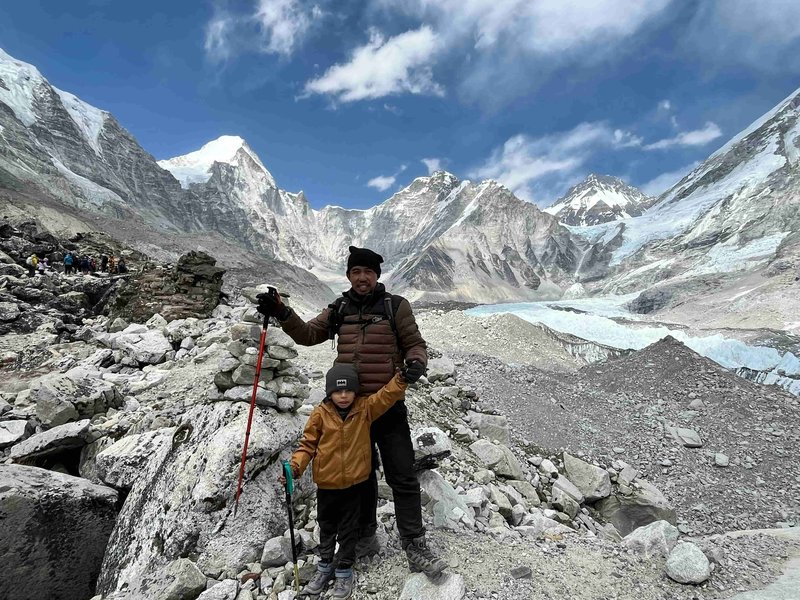
The Pikey Peak Trek stands as Nepal's best-kept trekking secret, offering extraordinary value for moderate effort. With transparent Pikey Peak Trek cost ranging from $400-1,200 and manageable Pikey Peak Trek difficulty, this adventure suits diverse fitness levels and budgets. The October November best season approaches quickly, making now the perfect time to book your Himalayan adventure.
Whether choosing Pikey Peak Trek 5 days for efficiency or Pikey Peak Trek 7 days for cultural depth, you'll experience authentic Sherpa hospitality, witness the rhododendron forests spring blooms, and stand where Edmund Hillary declared his favorite Himalayan viewpoint. The straightforward Pikey Peak Trek permit process and multiple transportation options from Kathmandu to Pikey Peak make logistics simple.
Don't let another season pass dreaming about the Himalayas. The Pikey Peak sunrise awaits, ready to paint Everest and her neighboring giants in golden light just for you. With proper preparation using this comprehensive guide, your Pikey Peak Trek will deliver memories lasting a lifetime at a fraction of the cost of overcrowded alternatives.
Book your trek during the Pikey Peak
best time for your preferences, pack according to the Pikey Peak elevation requirements, and prepare for an adventure combining achievable challenge with extraordinary rewards. The mountains are calling - will you answer?
Ready to explore Nepal's hidden gem? Contact Himalayan Hero Adventures today:
📧 Email: [email protected]
📱 WhatsApp: +9779801127073
🌐 Website: himalayanhero.com

